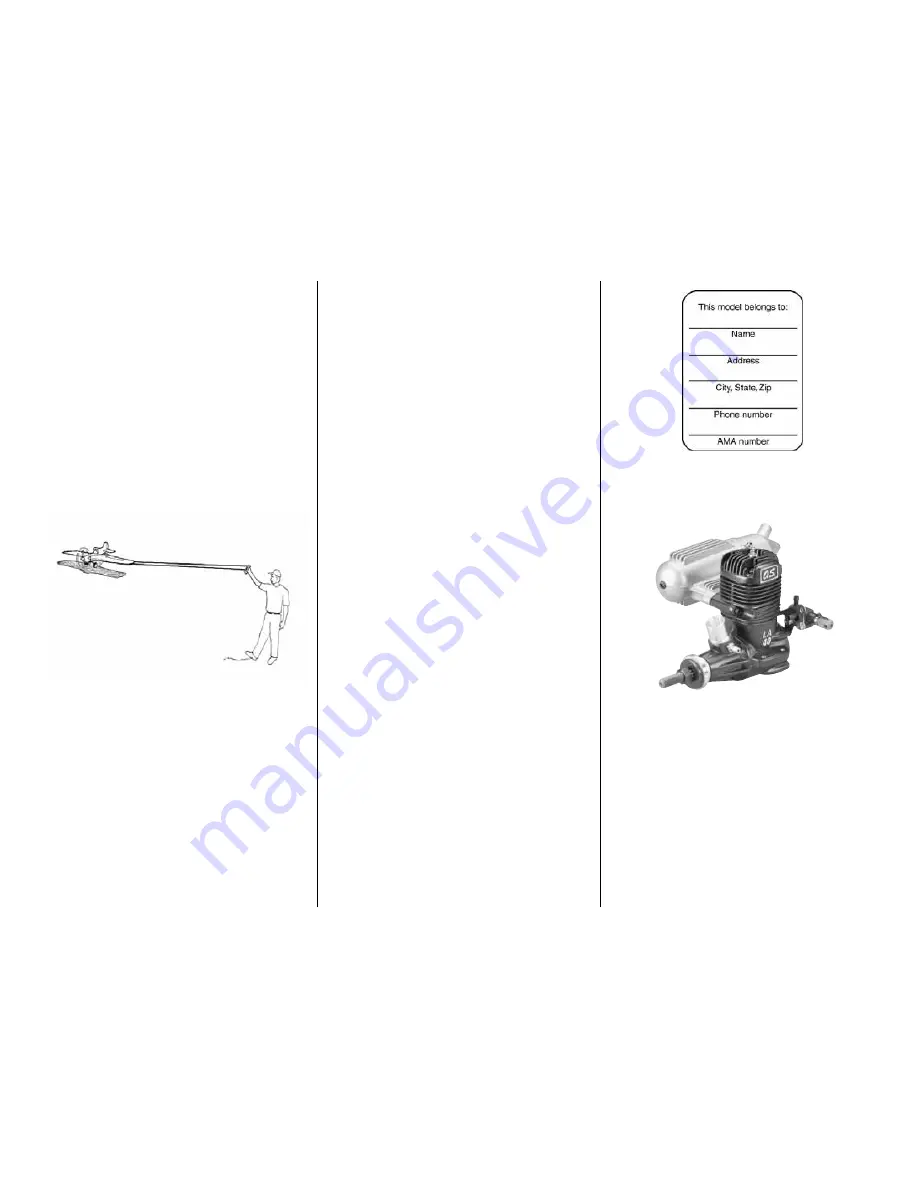
when they become more experienced, wrist
movement may be increased to increase control
response. All control inputs should be smooth.
Continue flying the model in a level attitude, getting
used to how the controls react and how the model
“feels.” Do this until the engine runs out of fuel. With
a full tank of fuel the Nobler will fly for a little over four
minutes, but actual flight time depends on several
factors, such as the engine size and brand, needle
valve setting, propeller size, fuel, atmospheric
conditions, etc.
Landing
When the engine starts to sputter and/or speed up,
this is an indication that the tank is nearly empty.
Continue to fly the model in a level attitude until the
engine finally quits. The same as any time the model
slows, the pilot should step back to keep the lines
taut and maintain control. Allow the model to
descend until it is about two feet off the ground.
When the model has lost nearly all flying speed and
is a foot or two from the ground the pilot should raise
his arm to keep the lines taut and apply full up
elevator, allowing the model to gently touch down.
After the model has come to a stop the assistant may
retrieve the model and return it to the starting area.
In doing so the lines should be kept taut so they do
not become twisted or entangled.
Clean the model using paper towels and household
cleaner to wipe off exhaust residue. Inspect the
model thoroughly, looking for loose fasteners and
signs of damage or fatigue. Also make sure the prop
has not been damaged. Perform any maintenance
necessary to prepare the model for the next flight.
At the end of the flying session any residual fuel
should be drained from the tank.
After you have become familiar with the way your
Nobler flies and you are ready to begin performing
stunts, seek the assistance of an experienced stunt
pilot before attempting to learn new maneuvers on
your own. Almost any control line stunt maneuvers
are started with the model downwind from the pilot,
i.e. wind on the pilots back. Consult the AMA Control
Line section for stunt maneuvers.
One final note about flying your model. Have a goal
or flight plan in mind for every flight. This can be
learning a new maneuver(s), improving a
maneuver(s) you already know, or learning how the
model behaves in certain conditions (such as when
testing different propellers or fuel). This is not
necessarily to improve your skills
(though it is never
a bad idea!), but more importantly so you do not
surprise yourself by impulsively attempting a
maneuver and suddenly finding that you’ve run out of
time, altitude or airspeed. Every maneuver should be
deliberate, not impulsive. For example, if you’re going
to do a loop, check your altitude and mind the wind
direction. A flight plan greatly reduces the chances of
crashing your model just because of poor planning
and impulsive moves. Remember to think!
Have a ball, keep the lines taut and always fly in
a safe manner.
GOOD LUCK, GREAT FLYING, AND HAVE FUN!
O.S. Engines
®
.40 LA-S Control Line Engine with Muffler
(OSMG1440)
The O.S. 40 LA-S offers the proven power of LA
Series R/C sport engines – but is engineered for the
special requirements of control line flying, replacing
the carburetor with a venturi that keeps the engine
running at a constant speed. A remotely mounted
needle valve keeps your hands safely distanced from
the spinning prop during adjustments. An O-ring
helps seal the needle against fuel and air leaks,
while heavy-duty webbing reinforces the blue-finish,
one-piece crankcase in high-stress areas. Includes
E-3030 muffler, muffler mounting screws, #A3 glow
plug, and 2-year warranty. Fuel with 10-20% nitro
and 18% oil content recommended.
- 22 -

















